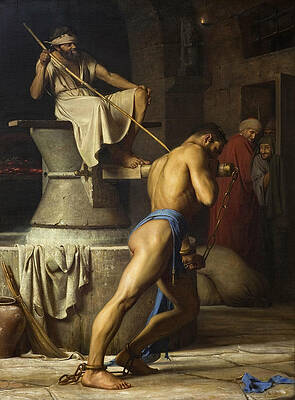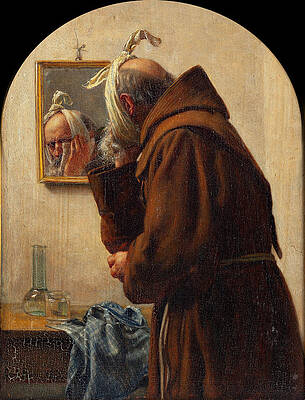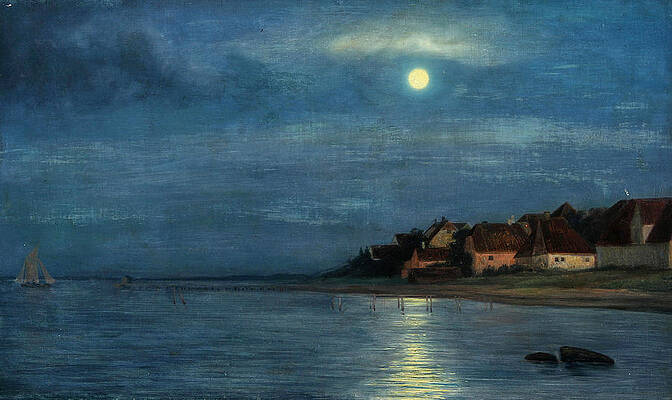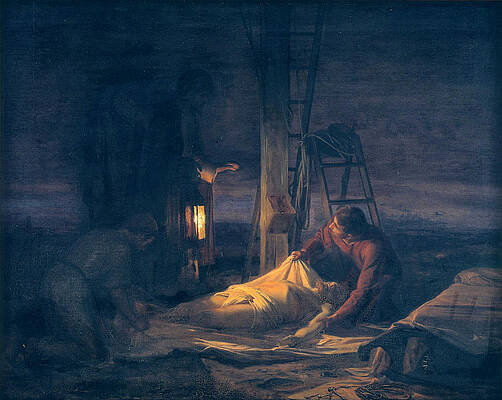Carl Bloch
Paintings
Jesus in Gethsemane
Adoration of the Shepherds
In a Roman Osteria
Samson and the Philistines
A monk examines himself in a mirror
Two smiling girls
Burial Of Jesus Christ
Doubting Thomas
Two women talking
Fishing families waiting for their men to return from an incipient storm. From Jutland west coast
Two old men sitting in the shadow. Hornbaek
Head of an Italian boy
A meal. Two boys and a grandmother tasting the potato soup
A young baker cooling down
Moonlight. Hellebaek
The Daughter of Jairus
Descent from the Cross


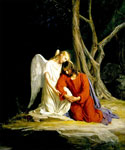
Jesus in the Garden of Gethsemane













Jesus casting out the money changers at the temple
Fine Art Prints | Greeting Cards | Phone Cases | Lifestyle | Face Masks | Men's , Women' Apparel | Home Decor | jigsaw puzzles | Notebooks | Tapestries | ...
Carl Heinrich Bloch (May 23, 1834 – February 22, 1890) was a Danish painter.
Biography
He was born in Copenhagen, Denmark and studied with Wilhelm Marstrand at the Royal Danish Academy of Art (Det Kongelige Danske Kunstakademi) there. Bloch's parents wanted their son to enter a respectable profession - an officer in the Navy. This, however, was not what Carl wanted. His only interest was drawing and painting, and he was consumed by the idea of becoming an artist. He went to Italy to study art, passing through the Netherlands, where he became acquainted with the work of Rembrandt, which became a major influence on him.[1] Carl Bloch met his wife, Alma Trepka, in Rome, where he married her on May 31, 1868. They were happily married until her early death in 1886.
His early work featured rural scenes from everyday life. From 1859 to 1866, Bloch lived in Italy, and this period was important for the development of his historical style.
His first great success was the exhibition of his "Prometheus Unbound" in Copenhagen in 1865. After the death of Marstrand, he finished the decoration of the ceremonial hall at the University of Copenhagen. The sorrow over losing his wife weighed heavily on Bloch, and being left alone with their eight children after her death was very difficult for him.
In a New Year's letter from 1866 to Bloch, H. C. Andersen wrote the following: "What God has arched on solid rock will not be swept away!" Another letter from Andersen declared "Through your art you add a new step to your Jacob-ladder into immortality."
In a final ode, from a famous author to a famous artist, H.C. Andersen said "Write on the canvas; write your seal on immortality. Then you will become noble here on earth."
He was then commissioned to produce 23 paintings for the Chapel at Frederiksborg Palace. These were all scenes from the life of Christ which have become very popular as illustrations. The originals, painted between 1865 and 1879, are still at Frederiksborg Palace. The altarpieces can be found at Holbaek, Odense, Ugerloese and Copenhagen in Denmark, as well as Loederup, Hoerup, and Landskrona in Sweden.
Through the assistance of Danish-born artist Soren Edsberg, the acquisition of "Christ healing at the pool of Bethesda," [formerly owned by Indre Mission, Copenhagen, Denmark], was recently made possible for The Museum of Art, Brigham Young University, Provo, Utah, USA.[1]
Carl Bloch died of cancer on February 22, 1890. His death came as "an abrupt blow for Nordic art" according to an article by Sophus Michaelis. Michaelis stated that "Denmark has lost the artist that indisputably was the greatest among the living." Kyhn stated in his eulogy at Carl Bloch's funeral that "Bloch stays and lives."
A prominent Danish art critic, Karl Madsen, stated that Carl Bloch reached higher toward the great heaven of art than all other Danish art up to that date. Madsen also said "If there is an Elysium, where the giant, rich, warm and noble artist souls meet, there Carl Bloch will sit among the noblest of them all!" (From Carl Bloch Site).
Bloch's influence
For over 40 years The Church of Jesus Christ of Latter-day Saints has made heavy use of Carl Bloch's paintings, mostly from the Frederiksborg Palace collection, in its church buildings and printed media. The LDS church has produced films depicting scriptural accounts of Christ's mortal ministry, using Bloch's paintings as models for the colour, light and overall set design as well as the movement of the actors in many of the films' scenes. The most notable example of this is the movie The Testaments of One Fold and One Shepherd.
References
BYU Magazine, Winter 2011.
Biography and Online Gallery of Carl Bloch, Hope Gallery and CarlBlock.com, 2007, retrieved on: July 22, 2007
----
Fine Art Prints | Greeting Cards | Phone Cases | Lifestyle | Face Masks | Men's , Women' Apparel | Home Decor | jigsaw puzzles | Notebooks | Tapestries | ...
----
Artist
A - B - C - D - E - F - G - H - I - J - K - L - M -
N - O - P - Q - R - S - T - U - V - W - X - Y - Z
Retrieved from "http://en.wikipedia.org/"
All text is available under the terms of the GNU Free Documentation License





